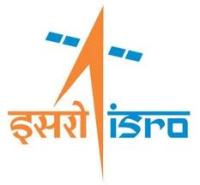 Indian Space Research Organisation’s scientists and engineers began to look at the possibility of establishing a navigation satellite system for the country from 2004, rather like America’s Global Positioning System (GPS). The GPS requires a constellation of 24 orbiting satellites, supported by a global network of ground stations, to cover every part of the world. That kind of global system is expensive. ISRO had a more limited goal — creating a system wholly in India's control for providing navigation signals over this country and surrounding areas.
The configuration that was finally chosen by Indian Space Research Organisation for the Indian Regional Navigation Satellite System (IRNSS) required just seven satellites.
Indian Space Research Organisation’s scientists and engineers began to look at the possibility of establishing a navigation satellite system for the country from 2004, rather like America’s Global Positioning System (GPS). The GPS requires a constellation of 24 orbiting satellites, supported by a global network of ground stations, to cover every part of the world. That kind of global system is expensive. ISRO had a more limited goal — creating a system wholly in India's control for providing navigation signals over this country and surrounding areas.
The configuration that was finally chosen by Indian Space Research Organisation for the Indian Regional Navigation Satellite System (IRNSS) required just seven satellites.
All 7 Indian Regional Navigation Satellite System satellites will be at a height of around 36,000 km, taking a whole day to circle the Earth. 3 of the satellites will be placed over the equator, in what is known as the geostationary orbit, where they match the Earth's rotation and therefore appear from the ground to remain at a fixed position in the sky. The remaining 4 satellites will be in pairs in two inclined geosynchronous orbits.
From the ground, these satellites will appear to travel in figures of ‘8’ during the course of a day.
The project to establish the Indian Regional Navigation Satellite System at a cost of Rs. 1,420 crores was approved by the Government of India in 2006. The primary service area for the system covers India and up to 1,500 km beyond its borders. The system “is expected to provide a position accuracy better than 20 metres in the primary service area,” according to an ISRO brochure.
However, the space agency’s technical personnel believe its actual performance is likely to be better than that and match single-frequency U.S. GPS receivers’ position accuracy of about 15 metres.
The first of the Indian Regional Navigation Satellite System satellites is scheduled go into space aboard the Polar Satellite Launch Vehicle on July 1.





0 comments: